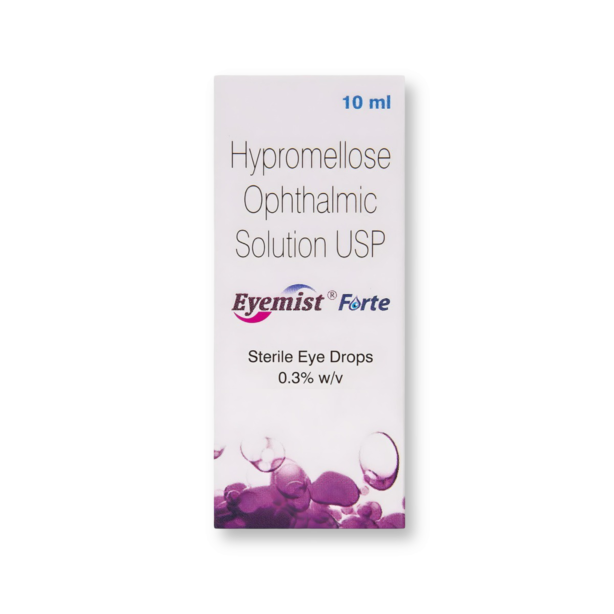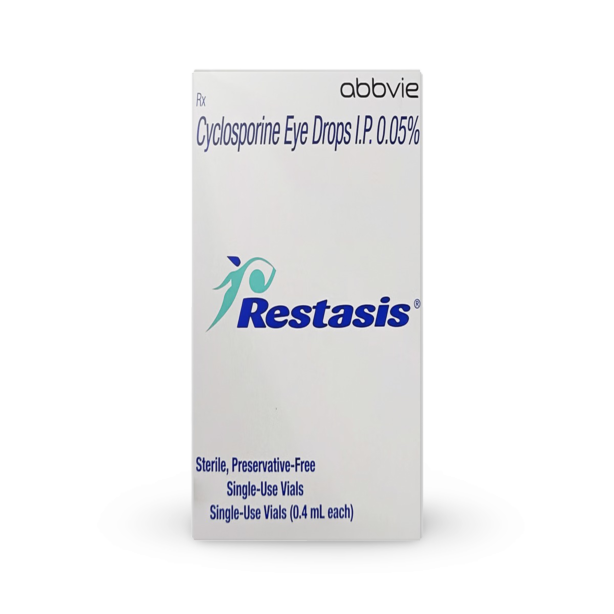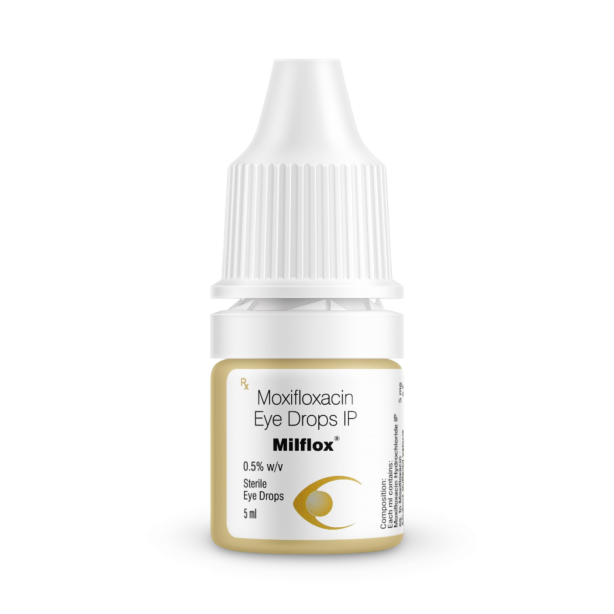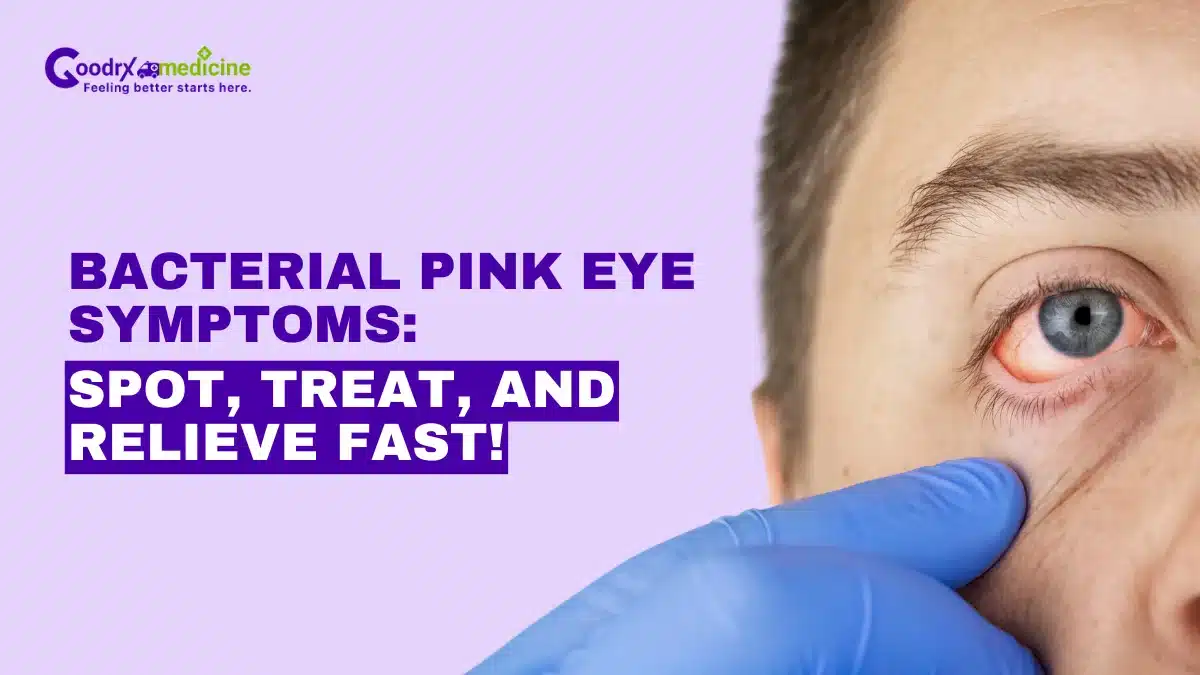Bacterial Pink Eye is a common eye problem. It can affect people of all ages, including you or someone you care for. While it may not always be serious, it can feel uncomfortable and even interrupt your day.
This condition, also known as Bacterial Conjunctivitis, is a bacterial infection of the conjunctiva, the clear layer covering your eyes and eyelids. This infection causes redness, swelling, and discharge.
It spreads easily from person to person through touch or shared items. Many people confuse it with other types of Pink Eye, so knowing the exact signs helps in getting the right care. Additionally, knowing the risk factors, possible complications, and treatment options helps protect your eyes and prevent spreading the infection to others.
This article explains the Bacterial Pink Eye symptoms in adults and children, how to tell bacterial from viral Pink Eye, and what you can do to feel better quickly.
What are the most common symptoms of Bacterial Pink Eye?
Bacterial Pink Eye symptoms often start suddenly and can range from mild to severe. Most symptoms are mild and may go away without treatment.
Here are the most common signs you may notice:
- Red, inflamed eyes: The white part of your eye turns pink or red due to swollen blood vessels in the conjunctiva.
- Yellow or white discharge: Thick, sticky pus or mucus may come from your eye. This discharge often causes your eyelids to stick together, especially in the morning.
- Crusty eyelids in the morning: You may wake up with crusts formed from dried discharge on your eyelashes or eyelids.
- Swollen eyelids: Puffiness or swelling around your eyes is common.
- Sticky eye feeling: Your eyes may feel glued shut or sticky.
- Gritty or sandy sensation: It may feel like something is in your eye.
- Watery, irritated eyes: Your eyes may tear more than usual and feel itchy or irritated.
- Sensitivity to light: Bright lights may bother your eyes.
- Blurred vision: You may also feel a slight blur in your vision if discharge builds up, a common blurred vision, in Pink Eye.
Usually, Bacterial Pink Eye starts in one eye but can spread to the other within a few days.
Save up to 90% on your medicine bills

Eyemist Forte 10 ml

Restasis 0.05% Ophthalmic Emulsion 0.4ml

Milflox 0.5% 5 ml

Pred Forte 10 ml
Rare or severe symptoms of Bacterial Pink Eye
Sometimes, Pink Eye symptoms become serious and may require quick medical help. These include:
- Sharp eye pain
- Trouble opening the eye
- Ciliary flush (red ring around the iris)
- Corneal ulcers (open sores on the eye)
- Corneal opacity (cloudy cornea)
- Fixed pupil (not reacting to light)
- Severe headache with nausea
These signs may point to deeper eye problems. See a doctor immediately if you have any of them.
Corneal opacity: A medical term used when the human cornea becomes damaged and loses its transparency.
Bacterial Pink Eye Symptoms in toddlers and children
Children often get Bacterial Pink Eye from daycare or school. Toddlers and young children are more prone to it because they often touch their eyes and share toys or towels. Bacterial Pink Eye symptoms in toddlers include red, swollen eyelids and sticky discharge.
Some children may complain of mild eye pain or burning. Because toddlers may not always express discomfort clearly, watch for signs like rubbing eyes, fussiness, or difficulty opening eyes. Kids are more likely to touch their eyes and spread germs.
Bacterial vs Viral Pink Eye symptoms: How to tell the difference
It can be tough to know if your Pink Eye is bacterial or viral. Knowing the difference between viral vs Bacterial Pink Eye symptoms helps choose the right care. Here’s a simple comparison:
| Symptom | Bacterial Pink Eye | Viral Pink Eye |
|---|---|---|
| Discharge | Thick, yellow, green, or pus-like discharge | Watery, clear discharge |
| Eyelids in the morning | Eyelids may be stuck together with crusts | Less crusting, more watery eyes |
| Spread | Usually starts in one eye, spreads quickly | Starts in one eye, spreads within days |
| Other symptoms | Sometimes an ear infection | Cold symptoms, such as a sore throat or a runny nose |
| Contagiousness | Highly contagious | Highly contagious |
Causes and risk factors
The causes of Bacterial Pink Eye include bacteria like Staphylococcus aureus, Streptococcus pneumoniae, and Haemophilus influenzae. These infect the conjunctiva, causing redness, swelling, and discharge. The infection spreads through contact with contaminated hands, towels, or items, even before symptoms appear.
You’re more likely to get it if you:
- Touch your eyes with dirty hands
- Use contact lenses incorrectly
- Share towels, makeup, or pillows
- Spend time in crowded places
- Have eye injuries or a weak immune system
Possible complications of Bacterial Pink Eye
If left untreated or if the infection is severe, Bacterial Pink Eye can lead to complications such as:
- Corneal ulcers (Open sores on the cornea that can cause vision loss)
- Chronic Conjunctivitis (Long-lasting infection that is hard to treat)
- Spread of infection (Bacteria can spread to other parts of the eye or body)
- Scarring of the conjunctiva or cornea.
These are rare but can be serious. Seeing a doctor early can prevent these outcomes.
When to see a doctor
You should see a healthcare provider if you experience:
- Severe pain or vision changes.
- Symptoms that worsen or don’t improve after a few days.
- Intense redness or swelling.
- Sensitivity to light.
- Signs of complications, such as corneal ulcers.
Early diagnosis and treatment help you recover faster and prevent the spreading of the infection.
How is Bacterial Pink Eye treated?
Ophthalmologists usually recommend antibiotic eye drops or ointments to kill the bacteria causing the infection. Common Bacterial Pink Eye treatments include:
- Antibiotic eye drops (e.g., Erythromycin, Tobramycin).
- Antibiotic ointments applied to the eyelids.
You must use the full course of antibiotics even if your symptoms improve quickly. Stopping treatment early can make the infection return or worsen.
In mild cases, Bacterial Pink Eye may clear up on its own within a week, but antibiotics speed recovery and reduce contagiousness.
Home care tips to relieve symptoms and prevent Bacterial Pink Eye
To ease symptoms and prevent bacterial pink eye, follow these home care tips:
- Use a warm compress and gently clean your eyelids to reduce swelling and crusts.
- Avoid rubbing your eyes and using contact lenses until fully healed.
- Wash hands often and avoid sharing towels, makeup, or contact lenses.
- Disinfect commonly touched surfaces.
- Rest your eyes, limit screen time, and stay home until you’re no longer contagious.
These steps help relieve discomfort and stop the eye infection from spreading. Good hygiene is your best defense against bacterial eye infections.
Conclusion
Bacterial Pink Eye symptoms include red, inflamed eyes, yellow or white discharge, crusty eyelids in the morning, swollen conjunctiva, and a sticky or gritty feeling in the eyes. Knowing the difference between bacterial vs viral Pink Eye symptoms helps you get the right treatment.
Risk factors like poor hygiene, contact lens use, and close contact with infected people increase your chance of infection. Untreated Bacterial Pink Eye can cause complications such as corneal ulcers and vision problems.
Doctors treat Bacterial Pink Eye with antibiotic eye drops or ointments, and home care helps relieve symptoms. Preventing infection involves good hygiene, avoiding sharing personal items, and staying away from others while contagious.
If you notice any signs of Bacterial Pink Eye, act quickly. Proper care protects your eyes and helps you feel better soon.

Frequently Asked Questions
How long does Bacterial Pink Eye take to show symptoms?
Bacterial Pink Eye usually shows symptoms within 1 to 3 days after you catch the infection. You may notice redness, swelling, or a sticky feeling in your eye during this time. It can spread easily, so keep your hands clean and avoid touching your eyes.
How long do symptoms of Bacterial Pink eye last?
Symptoms of Bacterial Pink Eye usually last about 5 to 7 days. You may see redness, swelling, and discharge from the eye. If you start treatment early, the symptoms can get better faster. Always keep your hands clean to avoid spreading it.
Can you go to work with Bacterial Conjunctivitis?
No, you should not go to work if you have Bacterial Conjunctivitis. It spreads easily to others. Stay home, rest, and use medicine if needed. Wash your hands often to stop germs. You can return to work when your eyes improve, and a doctor says it is okay.
What is commonly misdiagnosed as Pink Eye?
Sometimes, a condition called Allergic Conjunctivitis or a blocked tear duct can be mistaken for Pink Eye. Both cause red, watery eyes, but they need different care. If your eyes stay red or hurt, see a doctor for the right help.
When referencing outside resources, GoodrxMedicine always provides full citations. To learn more about the measures we use to maintain the quality of our content, please review our Content Information Policy.











